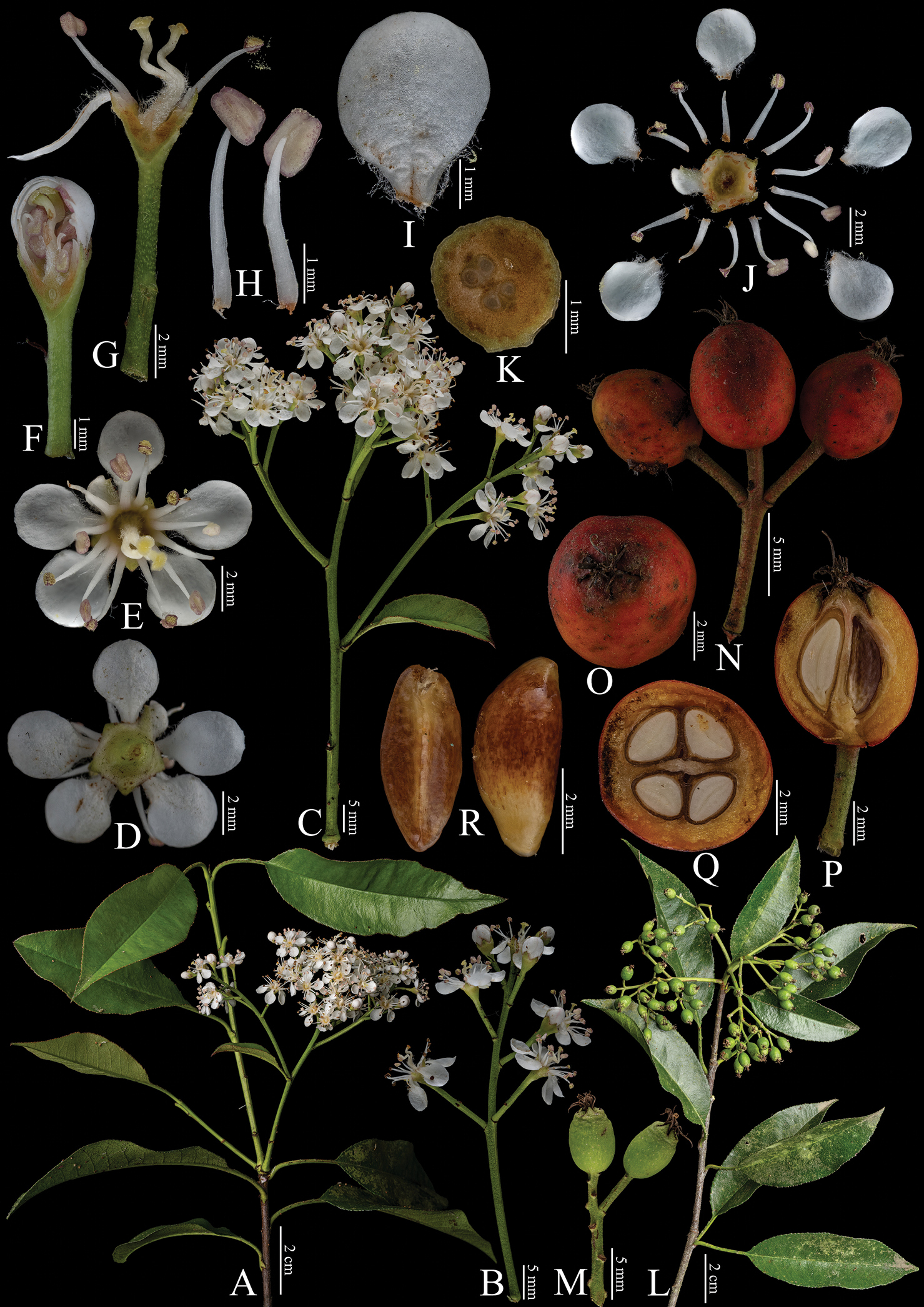
|
||
|
Fine structure of Photinia prunifolia, encompassing various developmental stages and perspectives. A inflorescence branch B, C inflorescence branchlet D bottom perspective of an individual flower E top view of a single flower F, G longitudinal section through the ovary H stamens I petals J dissected flower showing internal structures K cross-section of the immature ovary L an infructescence branch M, N comparative fruit in both inmature and mature states O fruit, viewed from above P longitudinal section of fruit Q cross-sections of fruit R fully matured seed. The inflorescence branches (A–K) were collected on April 13, 2024. The infructescence branches in the immature state (L, M) were collected on October 7, 2023, while the remaining samples (N–R) were gathered on November 29, 2023. Ting Wang was responsible for the collection of all fresh specimens at the Hangzhou Botanical Garden (Zhejiang, China). Furthermore, Bin-Jie Ge (Chenshan Botanical Garden, Shanghai, China) dissected and photographed all the samples. |